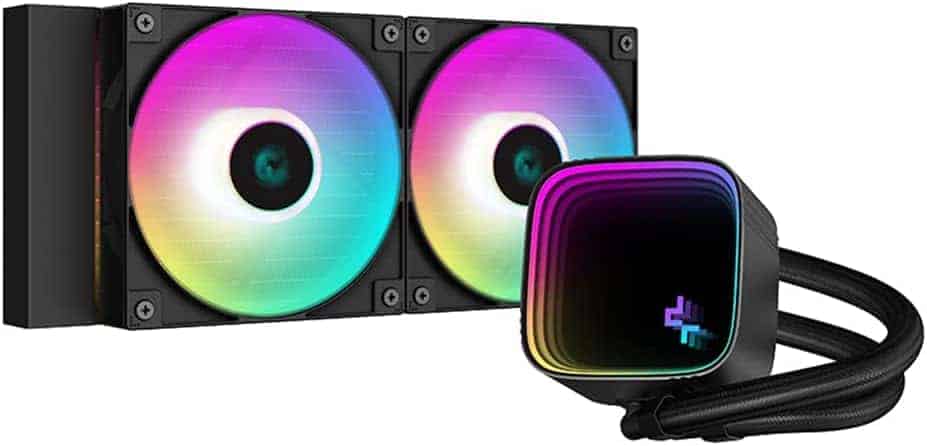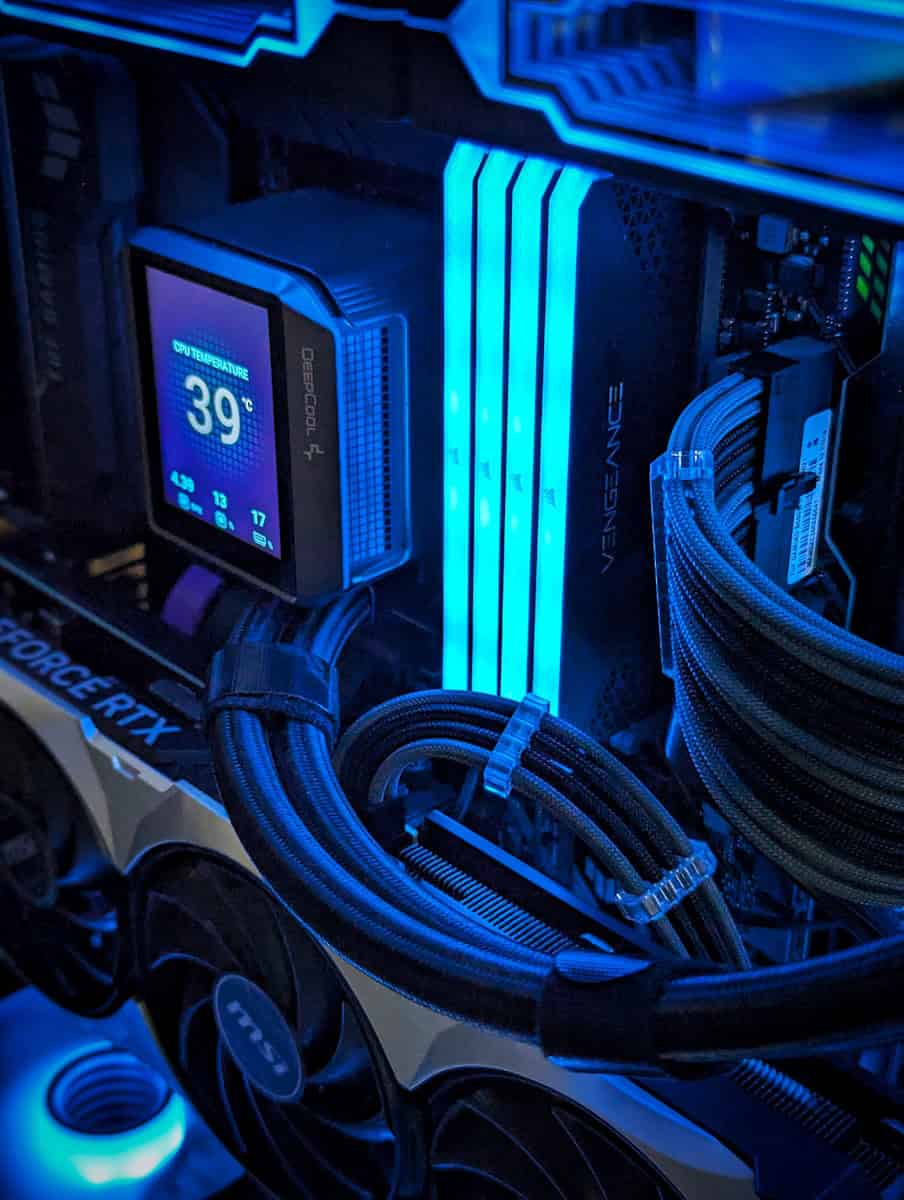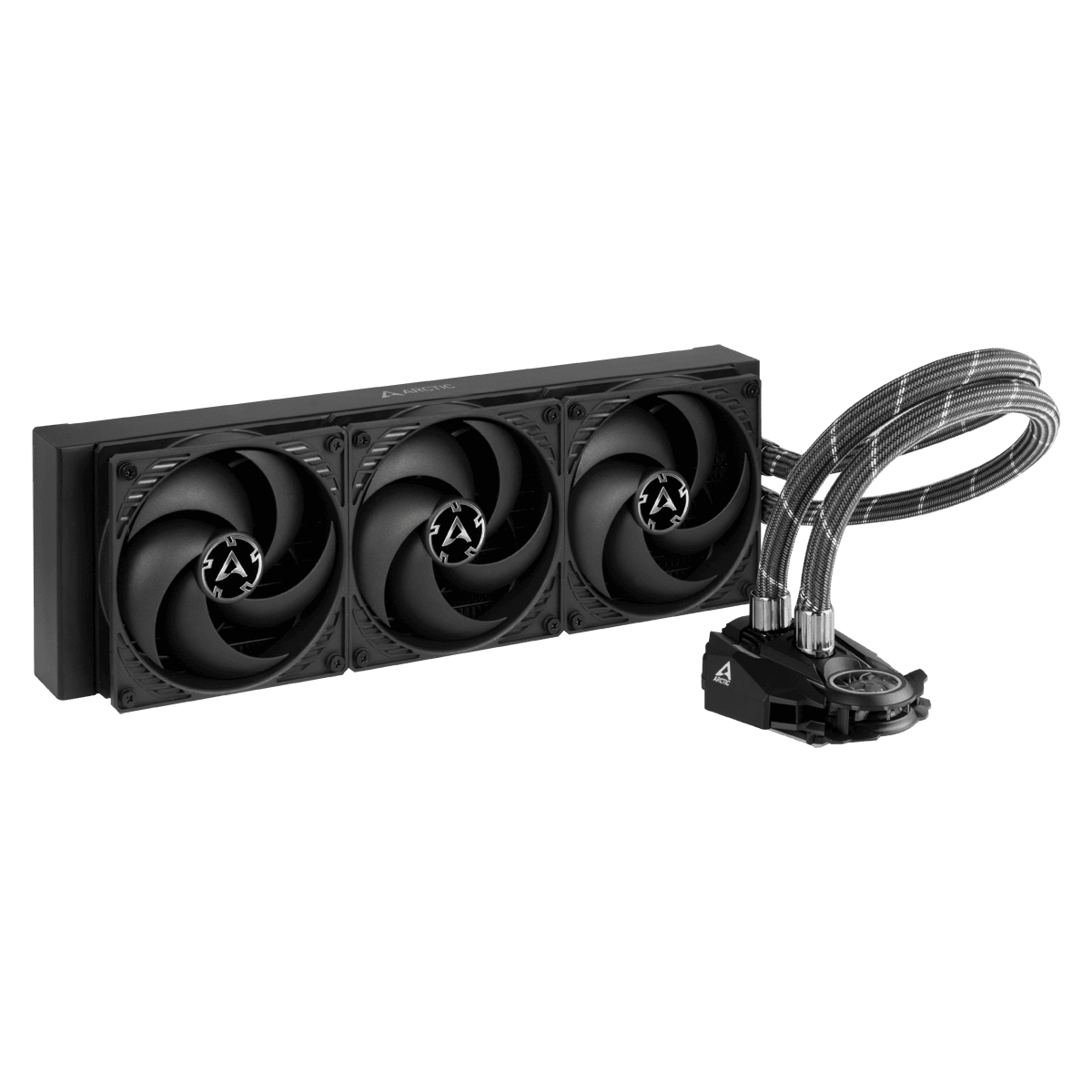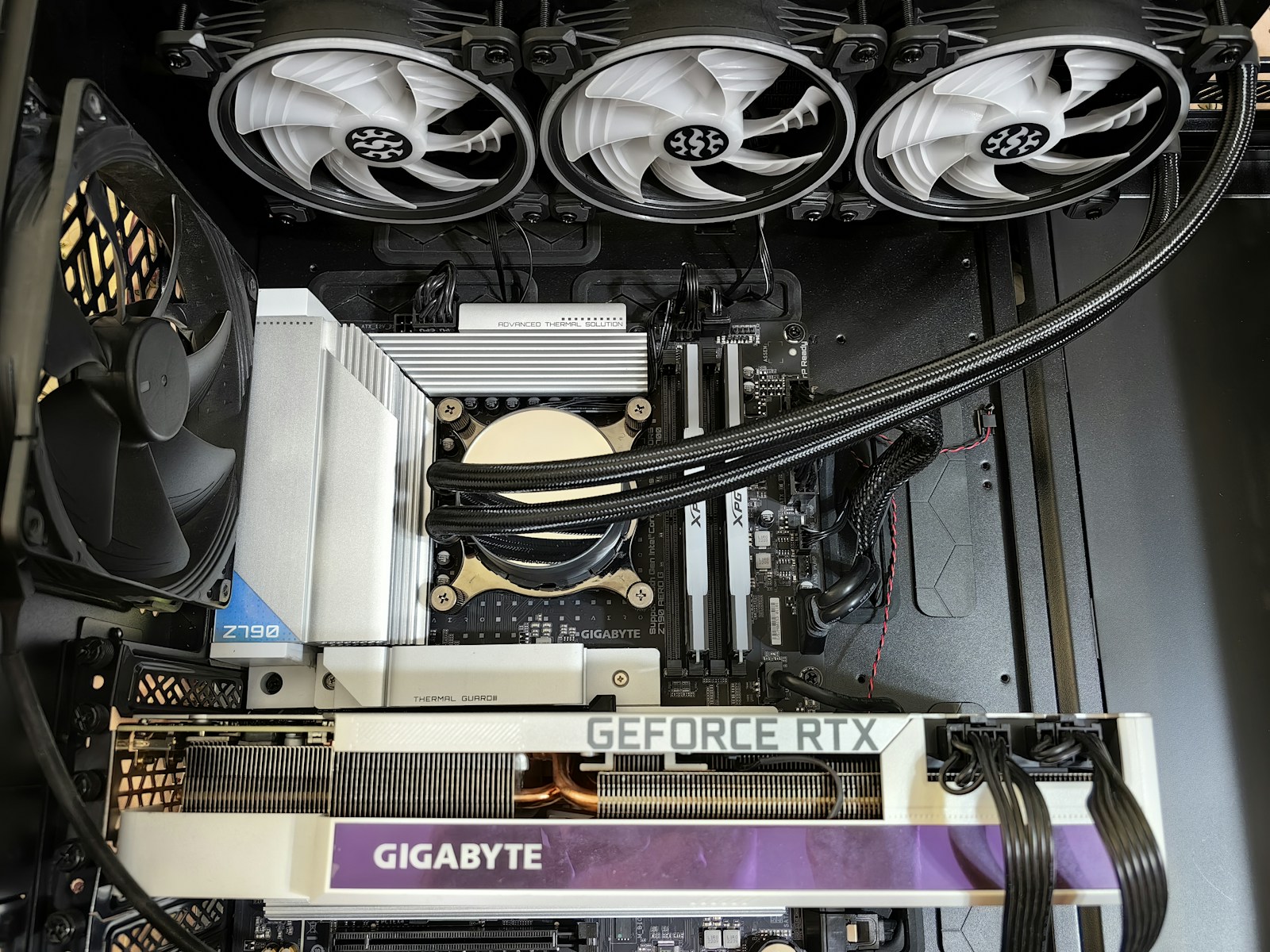When it comes to building the ultimate PC, cooling performance is often at the top of the list of priorities, especially for gaming enthusiasts, content creators, and those pushing their systems to the limit with overclocking. While traditional air cooling has been the go-to method for years, liquid cooling is fast becoming the favored option for those looking for top-tier cooling, quieter operation, and a sleeker, more customizable setup. But is it truly worth the investment? Let’s explore the benefits, drawbacks, and considerations to help you decide if liquid cooling is the right choice for your next build.
Why Consider Liquid Cooling?
1. Superior Cooling Efficiency
Liquid cooling’s primary appeal lies in its cooling performance. Water, or other specially formulated coolants, is much more efficient at transferring heat compared to air. This is particularly important when dealing with high-performance components like CPUs, GPUs, or even memory modules, which can generate significant amounts of heat under heavy loads. According to experts in the field, liquid cooling systems can maintain lower temperatures, keeping your components from thermal throttling and improving overall system stability, especially during intense gaming or video editing sessions.
In fact, liquid cooling can allow users to achieve higher overclocking potential. Overclocking is the practice of pushing your hardware beyond its manufacturer-rated speeds to achieve better performance. This generates even more heat, and liquid cooling helps keep temperatures in check while maintaining stability, thus offering more headroom for performance tweaks without risking system crashes or component damage.

2. Quieter Operation
Another major advantage of liquid cooling systems is their ability to operate more quietly compared to traditional air coolers. High-performance air coolers often require large fans running at high speeds to dissipate heat, resulting in noisy operation. Liquid coolers, especially All-In-One (AIO) systems, are generally quieter since the pump circulates coolant while the fans move the heat through a radiator, which is often quieter due to its larger surface area and slower rotational speed.
For users building a PC with an emphasis on silence—such as for audio production or home theater setups—liquid cooling can be a game-changer. Some studies suggest that air cooling systems can reach noise levels up to 50 dB, while a well-optimized liquid cooling setup can keep noise levels as low as 30 dB, creating a much quieter experience.
3. Aesthetics and Customization
One of the most striking advantages of liquid cooling systems, especially custom loops, is the visual appeal. Unlike bulky air coolers, liquid cooling setups feature sleek tubing, reservoirs, and often RGB lighting, which can transform your PC into a showpiece. For gamers and PC builders who view their machines as works of art, liquid cooling offers endless possibilities for customization, from vibrant coolant colors to illuminated tubes and fans.
Many high-end liquid cooling setups have been designed not just for performance but for aesthetics as well. Top-tier custom loops can look like something straight out of a futuristic science fiction film, giving your rig a polished, professional appearance that air coolers simply can’t match.
The Downsides of Liquid Cooling
1. Higher Initial Cost
Let’s be real: liquid cooling isn’t cheap. While entry-level All-In-One (AIO) units are more affordable, custom water cooling loops can run up to several hundred dollars depending on the quality and customization level. In comparison, air coolers are much more budget-friendly, with many models costing a fraction of the price of an AIO system. For users building a system with cost-effectiveness in mind, this can be a significant factor.
The extra cost of liquid cooling often extends beyond the initial purchase price—custom liquid cooling loops require additional components such as pumps, reservoirs, and fittings, all of which add to the total cost. For gamers and professionals who are building budget-conscious PCs, air cooling might still be the more practical choice.

2. Increased Maintenance
Unlike air cooling systems, which are relatively “set it and forget it,” liquid cooling systems require regular maintenance. Custom loops need to be flushed and refilled with coolant periodically, and the pump and tubing need to be inspected for wear and tear. While AIO systems are generally lower maintenance, they still need occasional cleaning, and the liquid in the loop can degrade over time, requiring a refill or replacement.
Failure to maintain a liquid cooling system properly could result in issues like clogged tubes, coolant leaks, or even pump failure, which can damage your PC. That’s why liquid cooling is better suited for those willing to dedicate some time to keeping their system in top shape.
3. Risk of Leaks and Complicated Setup
While rare with modern systems, leaks are a potential risk with liquid cooling, especially in custom loop setups. Even a small leak can lead to catastrophic hardware damage, particularly if coolant gets into sensitive areas like the motherboard. However, with AIO systems, the likelihood of leaks is much lower since the components are pre-sealed and tested for safety.
Another point to consider is the complexity of installation. Custom liquid cooling loops are significantly more complicated to set up than traditional air coolers. They require precise planning, a careful understanding of how the loop works, and sometimes, professional installation. For first-time builders, this complexity can be daunting.
Is Liquid Cooling Worth It?
So, is liquid cooling worth the investment? If you’re an enthusiast or a user looking to push your system to its limits with overclocking, heavy workloads, or demanding games, the performance and thermal benefits of liquid cooling are undeniable. For users who value a quieter system and a sleek, customizable appearance, liquid cooling systems can be an attractive choice.
On the other hand, if you’re a casual gamer, office worker, or someone who doesn’t push their PC’s performance to the edge, air cooling remains a cost-effective, simple, and reliable option. It’s also worth noting that for most users, modern air coolers can handle the heat generated by even high-end CPUs and GPUs without issue.

Ultimately, liquid cooling offers a premium experience, but it requires a higher budget, more maintenance, and a willingness to dive deeper into your PC’s inner workings. If you don’t mind the extra cost, complexity, and upkeep, it can be an excellent choice for users seeking maximum cooling performance, minimal noise, and a visually stunning PC. For the majority of users, however, air cooling is more than adequate and can deliver solid results without the need for extra effort or investment.
Key Takeaways
- Liquid cooling offers better cooling and quieter operation than air cooling
- It costs more and needs more setup and care than air cooling
- Most users can get by with air cooling, but liquid cooling suits high-performance needs
Understanding Liquid Cooling Systems
Liquid cooling systems use fluid to move heat away from computer parts. They have special parts and work differently from air cooling.
Components of Liquid Cooling
A liquid cooling system has several key parts. The water block sits on top of the CPU or GPU. It moves heat from the chip to the liquid. The pump pushes the liquid through tubes. The radiator releases heat from the liquid into the air. Fans on the radiator help blow the heat away.
Some systems also have a reservoir. It holds extra liquid and makes it easier to fill the system. Fittings connect all the parts together. The coolant is the liquid that moves through the system. It’s usually a mix of water and other chemicals.
Liquid Cooling vs. Air Cooling
Liquid cooling often works better than air cooling. It can move heat away from parts faster. This helps keep the CPU and GPU cooler. Cooler parts can run faster and last longer.
Air coolers use fans and metal fins to cool parts. They’re simpler and cheaper. But they can be noisy and take up more space inside the computer case.
Liquid cooling is usually quieter. It can also cool parts that are hard to reach with air cooling. But liquid cooling costs more and can be harder to set up.
Types of Liquid Cooling Solutions
There are two main types of liquid cooling: all-in-one (AIO) and custom loops.
AIO coolers are pre-built and easy to install. They come ready to use with the liquid already inside. Most AIO coolers only cool the CPU. They’re a good choice for people who want better cooling without much work.
Custom loops let you cool more parts. You can add the GPU, memory, and even the motherboard to the loop. They offer the best cooling but cost the most. Custom loops also need more work to set up and maintain.
Some companies like Corsair make both AIO and custom loop parts. You can choose the best option for your needs and budget.
Assessing the Value of Liquid Cooling
Liquid cooling offers benefits and drawbacks for PC users. It can boost performance and reduce noise, but comes with added costs and risks.
Performance Enhancement
Liquid cooling can help PCs run faster and cooler. It moves heat away from parts like CPUs and GPUs better than air cooling. This lets components work harder without overheating. Gamers and power users often choose liquid cooling to push their systems further.
Overclocking becomes easier with liquid cooling. Higher clock speeds are possible without thermal throttling. This can lead to noticeable gains in demanding tasks like video editing or 3D rendering.
For normal use, the performance boost may be small. Basic air coolers can handle most everyday tasks just fine. The real benefits show up in high-end builds and intense workloads.
Noise and Aesthetics
Liquid cooling can make PCs quieter. Water pumps and large radiator fans often run at lower speeds than CPU air coolers. This cuts down on fan noise, especially under heavy loads.
Many liquid cooling setups look sleek and eye-catching. Clear tubes filled with colored coolant add flair to a PC build. RGB lighting on water blocks and fans lets users customize their look.
Some liquid coolers take up less space inside a case than big air coolers. This can make building in smaller cases easier. It also leaves more room for other parts like large graphics cards.
Considerations and Challenges
Liquid cooling costs more than air cooling. A basic all-in-one (AIO) cooler starts around $60. Custom loops can run hundreds of dollars. Users must weigh if the benefits are worth the price.
Installing liquid cooling takes more time and skill. AIOs are fairly simple, but custom loops need careful planning. Maintenance is also key. Coolant levels must be checked, and parts may need cleaning.
Leaks are a rare but serious risk. Even a small leak can damage expensive PC parts. Quality parts and proper installation help prevent issues. But the risk is higher than with air cooling.
Liquid cooling isn’t needed for most users. It shines in high-performance builds and overclocking. For average PCs, a good air cooler often does the job at a lower cost and with less fuss.







